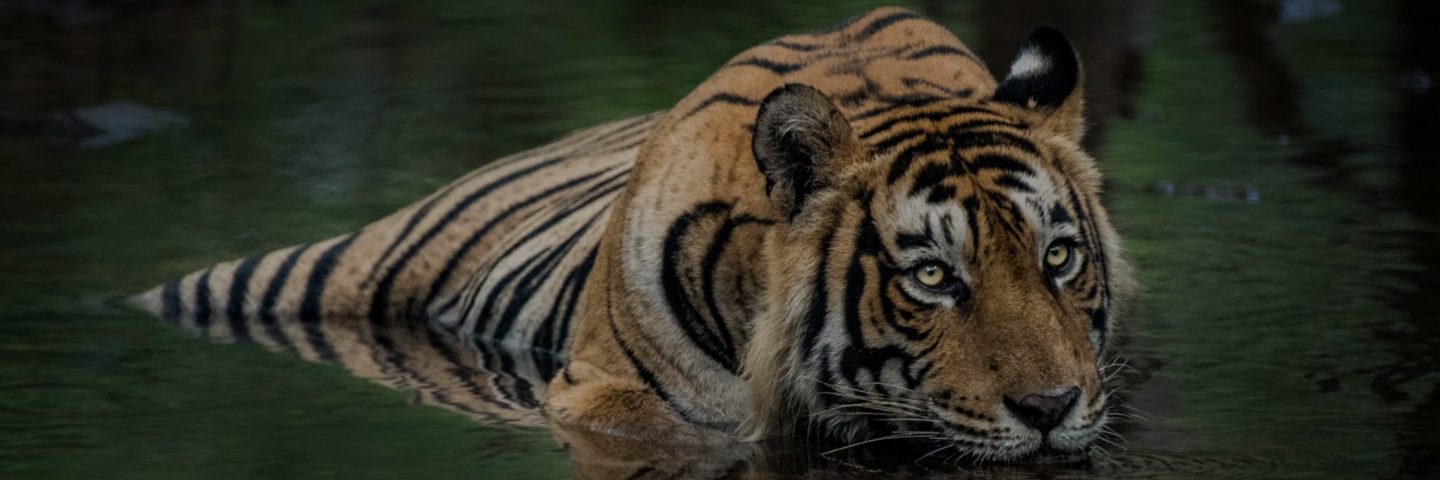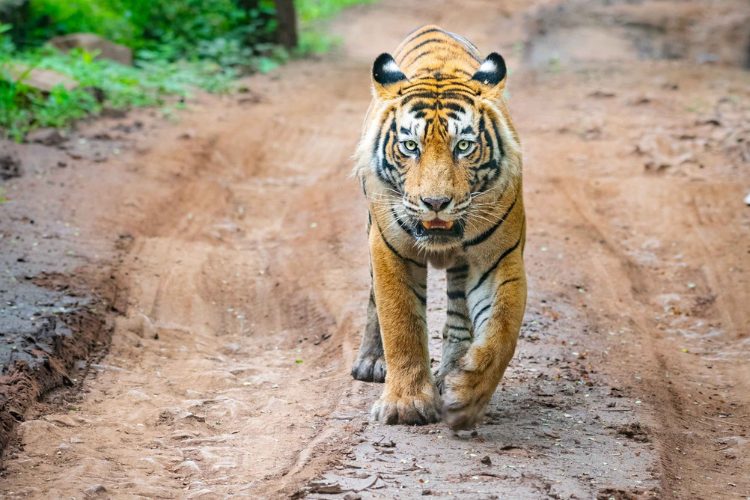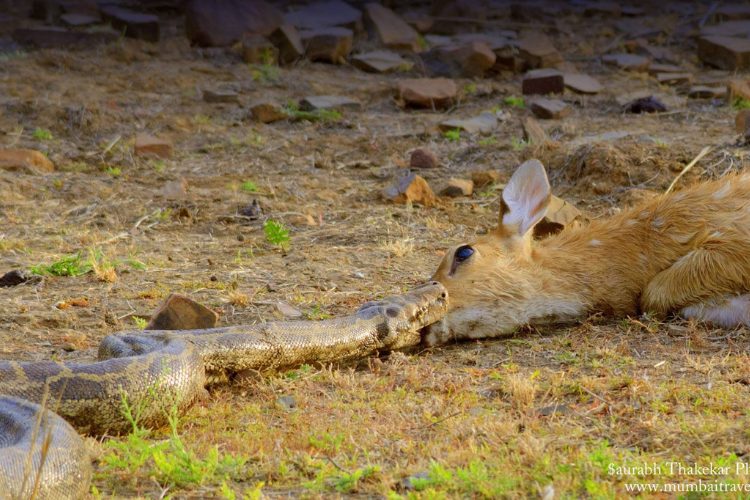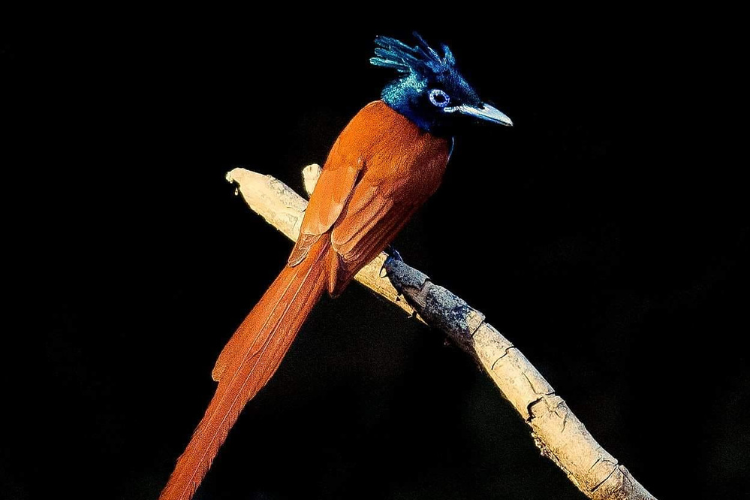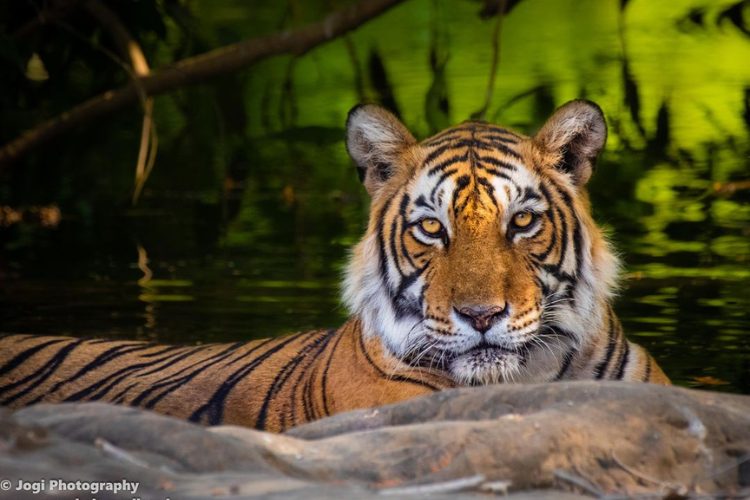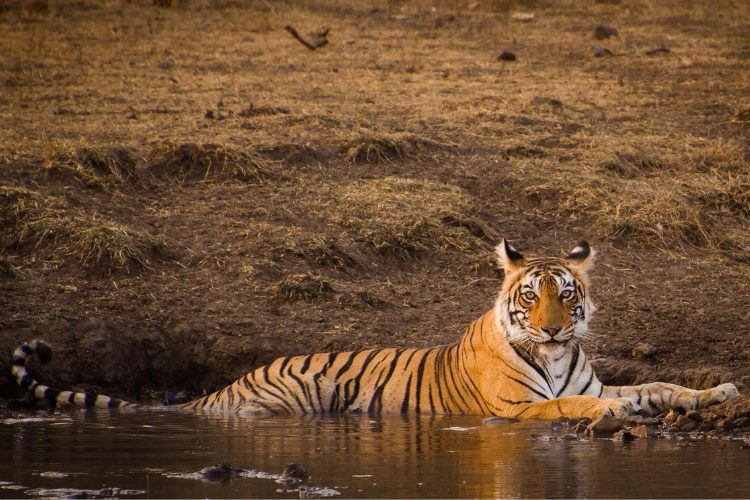Charming like its name, Ranthambore Tiger Reserve is located in the beautiful Aravali Hille and Vidhyan plateau, the forest spans an incredible expanse of land of 1334 square kilometres and about 392 square kilometres of it are open for tourism.
The grounds of this park hold significant historical value, reminiscent of hunting grounds of once mighty Maharajas of Jaipur. Every year tourists flock in herds to visit the diurnal Royal Bengal Tigers at this famous park. Wildlife enthusiasts and photographers are often seen in these woods; however, many travellers arrive at the park due to the documentaries broadcasted on famous Tigress Machli. If you haven’t heard of Machli yet, you’re a tad bit late as the world-famous animal died in August of 2016. But don’t worry, there are many talented tigers here waiting for their time to shine.
Good To Know
Country
India
Country
State
India
Rajasthan
Country
Nearest Airport
India
Jaipur Airport
Country
Wildlife Sighting Index
India
8/10 for Tiger sighting
Country
Beauty of Forest Index
India
9/10 Beauty of Forest
Country
Standard of Infrastructure Index
India
8/10 Stay & amenities
Country
Bookings Open
India
90 Days in Advance
Country
Consider Securing
India
60 Days in Advance
Flora of Ranthambore Tiger Reserve
Tall hills, fast-flowing rivers, arching plateaus and much more. The landscape of the forest is as diverse as it is beautiful. From the gentle and undulating slopes of Vidhyan plateaus to the conical and steep plateaus of Aravali valleys. Pure sands of Dhok tree coupled with open grasslands, tall prairies, exuberant foliage around the canals defines the jungle.
Other dominant trees are Banyan, Pipal, Neem. They all are popular species of trees with religious, cultural and medicinal value. Flowering and fruit trees are also common in the vast lands of Ranthambore, exciting ones include Mango, Jamun, Tamarind and Blackberry. Lastly, we can’t omit the vibrant flame of the forest, whose orange hues colour the forest into some spectacular views. You can also witness the calming Lotus and water lilies species here amidst the ample wondrous lakes and Khud grass surrounding the numerous rivers.
- Babul (Accasia nilotica)
- Gum (Sterculia urens)
- Gurjan (Lannea coromandelica)
- Kadam (Authocephalus cadamba)
- Khair (Accacia catechu)
- Khajur (Phoenix sylvestris)
- Kakera (Flacourtia indica)
- Karel (Capparis decidua)
- Khimi (Manilkara hexandra)
- Kikar (Acacia nilotica)
- Mahua (Madhuca indica)
- Salar (Boswellia serrata)
- Kulu (Sterculia urens)
- Ronj (Acacia leucophloea)
- Tendu (Diospyrous melanoxylon)
Fauna of Ranthambore Tiger Reserve
As previously mentioned, the charm of Ranthambore is not only Royal Tigers but diurnal tigers, which means that tourists can count their blessings as they spot the mighty tigers during the day. Tourists can also expect to witness many variations of felines in the woods. So, keep your eyes open and your sense alert, you may come across a beautiful blue bull lazing in the fields or a lively little fawn prancing through the trees or a marsh crocodile relaxing by the lake.
The park has also been dubbed as bird watcher’s paradise with tons of vivid and stunning species of birds living in the trees.
- Sloth Bear
- Jackal
- Striped Hyena
- Desert fox
- Palm civet
- crocodile
- common mongoose
- python
- Painted Sandgrouse
- Kingfisher
- Painted Spurfowl
- Sarus Crane
- large Cormorant
- Bronzed winged Jacana
- Sandpiper
- Nightjar
- Great horned owl
For Package Details & Enquiry
Explore The Known and Unknown of Ranthambore Tiger Reserve
If you’re visiting one of the most celebrated parks in all of India, you must make the most of your trip. Start your trip with exploring the wildlife, the wide variety of species from Kingdom Animalia will startle and soothe you at the same time. Enjoy watching and studying more than 300 kinds of birds as you relax beside the numerous water bodies garnishing the park. And once you’ve explored enough, explore a little more by riding on the Jeep through the Safari, cruise through the open lands and open sky. If you prefer something more communal you can even try the 20 seater Canter Safari to quench your thirst for adventure.
Apart from the obvious, there are many other attractions at Ranthambore. Some places you can visit only at Ranthambore include Trinetra Ganesh Temple, the only temple where Lord Ganesha is depicted with three eyes. You can also specially take a trip around Bakaula where many animals including the Bengal Tiger can be spotted due to its many water holes. Bakaula is perfect for animal sightings as well as enjoying refreshing scenery. Motoever, near Ranthambore there is Kachida Valley, a home for panthers and sloths and beautiful landscapes for viewing pleasure.
Lakarda and Anantpura are also places inside Ranthambore prominent for stupefying lakes and excellent views of striped hyenas and leopards. During your Safari, don’t forget to capture shots of the famous Raj Bagh Ruins, ancient stone structures that exist as domes, steps and arches. If you’re a lake enthusiast, make sure to take out some time to truly bathe in the comforting views of Padam Talao Lake. The largest lake at Ranthambore National Park and often frequented by chinkara deer and crocodiles.
Ranthambore Tiger Reserve Safari Booking
Jeep Safari and Canter Safaris are available during the times when the park is open. Depending on the season there are slight differences in the timings.
1 Oct to 31st October:
6:30 am to 10 am 2:30 pm to 6:00 pm
1st Nov – 31st January:
7:00 am to 10:30 am 2 pm to 5:30 pm
1st Feb- 31st March:
6:30 am to 10 am 2:30 pm to 6:00 pm
1st April- 15th May:
6 am to 9:30 am 3 pm to 6:30 pm
15th May – 30th June:
6 am to 9:30 am 3:30 pm to 7:00 pm
How to reach Ranthambore Tiger Reserve
Rajasthan is well connected to the rest of India by highways, railway stations and airports. Moreover, the prominence of Ranthambore National Park makes it possible to obtain cabs or travel guidelines leading directly to where you’re headed. The nearest airport to Ranthambore is situated in Rajasthan’s capital city, Jaipur.
The national park sits at a distance of around 200 km from Jaipur International Airport. Cabs are readily available from the airport to the park. The nearest railway station to Ranthambore National Park is situated in Sawai Madhopur. The railway station is at a distance of 14 km from the national park. There is no direct bus to Ranthambore National Park, but visitors can first reach Jaipur or Sawai Madhopur and from their book a cab to the park. Jaipur sits at a distance of about 200 km and Sawai Madhopur is only 14 km from Ranthambore.
Resorts at Ranthambore Tiger Reserve
Owing to its immense popularity for the best wildlife experience in India, Ranthambore National Park has become a hospitality hub with a plethora of hotels and resorts promising the finest staying experience.
The accommodation options in Ranthambore National Park ranges from budget to luxury to eco-friendly to thematic hotels ensuring unique experiences depending on your budget and interest. Options include Budget hotels, Standard hotels, High-end hotels, Deluxe hotels and Luxury hotels. Some examples include On Rudrapriya Holiday Resort, Welcom Heritage Mount Valley Resort, Ranthambore Heritage Haveli Resort, Raj palace Resort Ranthambore, Tiger Den Resort, The Tigress Resort Ranthambore and many more!

